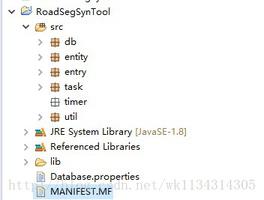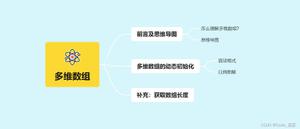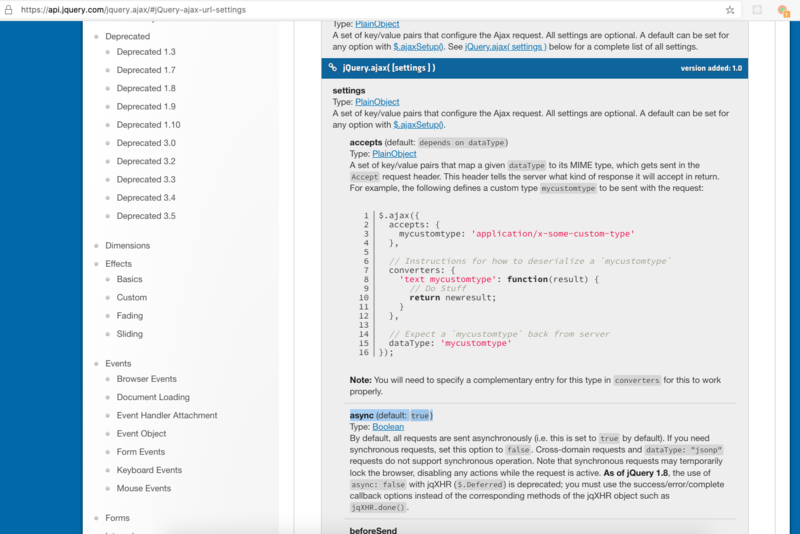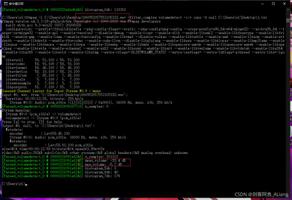【Java】Java同步容器
同步容器
- ArrayList ===> Vector,Stack
- HashMap ===> HashTable(key,value都不能为空)
- Collections.synchronizedXXX(List,Set,Map)
Vector实现List接口,底层和ArrayList类似,但是Vector中的方法都是使用synchronized修饰,即进行了同步的措施。 但是,Vector并不是线程安全的。
Stack也是一个同步容器,也是使用synchronized进行同步,继承与Vector,是数据结构中的,先进后出。
HashTable和HashMap很相似,但HashTable进行了同步处理。
Collections工具类提供了大量的方法,比如对集合的排序、查找等常用的操作。同时也通过了相关了方法创建同步容器类
Vector
package com.rumenz.task;import java.util.List;
import java.util.Vector;
import java.util.concurrent.CountDownLatch;
import java.util.concurrent.ExecutorService;
import java.util.concurrent.Executors;
import java.util.concurrent.Semaphore;
//线程安全
public class VectorExample1 {
public static Integer clientTotal=5000;
public static Integer thradTotal=200;
private static List<Integer> list=new Vector<>();
public static void main(String[] args) throws Exception{
ExecutorService executorService = Executors.newCachedThreadPool();
final Semaphore semaphore=new Semaphore(thradTotal);
final CountDownLatch countDownLatch=new CountDownLatch(clientTotal);
for (int i = 0; i < clientTotal; i++) {
final Integer j=i;
executorService.execute(()->{
try {
semaphore.acquire();
update(j);
semaphore.release();
}catch (Exception e){
e.printStackTrace();
}
countDownLatch.countDown();
});
}
countDownLatch.await();
executorService.shutdown();
System.out.println("size:"+list.size());
}
private static void update(Integer j) {
list.add(j);
}
}
同步容器不一定就线程安全
package com.rumenz.task;import scala.collection.convert.impl.VectorStepperBase;
import java.util.List;
import java.util.Vector;
import java.util.concurrent.ExecutorService;
import java.util.concurrent.Executors;
import java.util.concurrent.Semaphore;
//线程不安全
public class VectorExample2 {
public static Integer clientTotal=5000;
public static Integer threadTotal=200;
private static List<Integer> list=new Vector();
public static void main(String[] args) {
ExecutorService executorService = Executors.newCachedThreadPool();
final Semaphore semaphore=new Semaphore(threadTotal);
for (int i = 0; i < threadTotal; i++) {
list.add(i);
}
for (int i = 0; i < clientTotal; i++) {
try{
semaphore.acquire();
executorService.execute(()->{
for (int j = 0; j < list.size(); j++) {
list.remove(j);
}
});
executorService.execute(()->{
for (int j = 0; j < list.size(); j++) {
list.get(j);
}
});
semaphore.release();
}catch (Exception e){
e.printStackTrace();
}
}
executorService.shutdown();
}
}
运行报错
Exception in thread "pool-1-thread-2" java.lang.ArrayIndexOutOfBoundsException: Array index out of range: 36at java.util.Vector.get(Vector.java:751)
at com.rumenz.task.VectorExample2.lambda$main$1(VectorExample2.java:38)
at java.util.concurrent.ThreadPoolExecutor.runWorker(ThreadPoolExecutor.java:1149)
at java.util.concurrent.ThreadPoolExecutor$Worker.run(ThreadPoolExecutor.java:624)
at java.lang.Thread.run(Thread.java:748)
原因分析
//线程1executorService.execute(()->{
for (int j = 0; j < list.size(); j++) {
list.remove(j);
}
});
//线程2
executorService.execute(()->{
for (int j = 0; j < list.size(); j++) {
list.get(j);
}
});
- 线程1和线程2都执行完
list.size(),都等于200,并且j=100 - 线程1执行
list.remove(100)操作, - 线程2执行
list.get(100)就会抛出数组越界的异常。
HashTable
package com.rumenz.task;import java.util.Hashtable;
import java.util.Map;
import java.util.concurrent.CountDownLatch;
import java.util.concurrent.ExecutorService;
import java.util.concurrent.Executors;
import java.util.concurrent.Semaphore;
//线程安全
public class HashTableExample1 {
public static Integer clientTotal=5000;
public static Integer threadTotal=200;
private static Map<Integer,Integer> map=new Hashtable<>();
public static void main(String[] args) throws Exception {
ExecutorService executorService = Executors.newCachedThreadPool();
final Semaphore semaphore=new Semaphore(threadTotal);
final CountDownLatch countDownLatch=new CountDownLatch(clientTotal);
for (int i = 0; i < clientTotal; i++) {
final Integer j=i;
try{
semaphore.acquire();
update(j);
semaphore.release();
}catch (Exception e){
e.printStackTrace();
}
countDownLatch.countDown();
}
countDownLatch.await();
executorService.shutdown();
System.out.println("size:"+map.size());
}
private static void update(Integer j) {
map.put(j, j);
}
}
//size:5000
Collections.synchronizedList线程安全
package com.rumenz.task.Collections;import com.google.common.collect.Lists;
import java.util.Collections;
import java.util.List;
import java.util.concurrent.CountDownLatch;
import java.util.concurrent.ExecutorService;
import java.util.concurrent.Executors;
import java.util.concurrent.Semaphore;
//线程安全
public class synchronizedExample {
public static Integer clientTotal=5000;
public static Integer threadTotal=200;
private static List<Integer> list=Collections.synchronizedList(Lists.newArrayList());
public static void main(String[] args) throws Exception{
ExecutorService executorService = Executors.newCachedThreadPool();
final Semaphore semaphore=new Semaphore(threadTotal);
final CountDownLatch countDownLatch=new CountDownLatch(clientTotal);
for (int i = 0; i < clientTotal; i++) {
final Integer j=i;
try{
semaphore.acquire();
update(j);
semaphore.release();
}catch (Exception e){
e.printStackTrace();
}
countDownLatch.countDown();
}
countDownLatch.await();
executorService.shutdown();
System.out.println("size:"+list.size());
}
private static void update(Integer j) {
list.add(j);
}
}
//size:5000
Collections.synchronizedSet线程安全
package com.rumenz.task.Collections;import com.google.common.collect.Lists;
import org.assertj.core.util.Sets;
import java.util.Collections;
import java.util.List;
import java.util.Set;
import java.util.concurrent.CountDownLatch;
import java.util.concurrent.ExecutorService;
import java.util.concurrent.Executors;
import java.util.concurrent.Semaphore;
//线程安全
public class synchronizedSetExample {
public static Integer clientTotal=5000;
public static Integer threadTotal=200;
private static Set<Integer> set=Collections.synchronizedSet(Sets.newHashSet());
public static void main(String[] args) throws Exception{
ExecutorService executorService = Executors.newCachedThreadPool();
final Semaphore semaphore=new Semaphore(threadTotal);
final CountDownLatch countDownLatch=new CountDownLatch(clientTotal);
for (int i = 0; i < clientTotal; i++) {
final Integer j=i;
try{
semaphore.acquire();
update(j);
semaphore.release();
}catch (Exception e){
e.printStackTrace();
}
countDownLatch.countDown();
}
countDownLatch.await();
executorService.shutdown();
System.out.println("size:"+set.size());
}
private static void update(Integer j) {
set.add(j);
}
}
//size:5000
Collections.synchronizedMap线程安全
package com.rumenz.task.Collections;import org.assertj.core.util.Sets;
import java.util.Collections;
import java.util.HashMap;
import java.util.Map;
import java.util.Set;
import java.util.concurrent.CountDownLatch;
import java.util.concurrent.ExecutorService;
import java.util.concurrent.Executors;
import java.util.concurrent.Semaphore;
public class synchronizedMapExample {
public static Integer clientTotal=5000;
public static Integer threadTotal=200;
private static Map<Integer,Integer> map=Collections.synchronizedMap(new HashMap<>());
public static void main(String[] args) throws Exception{
ExecutorService executorService = Executors.newCachedThreadPool();
final Semaphore semaphore=new Semaphore(threadTotal);
final CountDownLatch countDownLatch=new CountDownLatch(clientTotal);
for (int i = 0; i < clientTotal; i++) {
final Integer j=i;
try{
semaphore.acquire();
update(j);
semaphore.release();
}catch (Exception e){
e.printStackTrace();
}
countDownLatch.countDown();
}
countDownLatch.await();
executorService.shutdown();
System.out.println("size:"+map.size());
}
private static void update(Integer j) {
map.put(j, j);
}
}
//size:5000
集合的删除
- 如果在使用foreach或iterator进集合的遍历,
- 尽量不要在操作的过程中进行remove等相关的更新操作。
- 如果非要进行操作,则可以在遍历的过程中记录需要操作元素的序号,
- 待遍历结束后方可进行操作,让这两个动作分开进行
package com.rumenz.task;import com.google.common.collect.Lists;
import java.util.Collections;
import java.util.Iterator;
import java.util.List;
public class CollectionsExample {
private static List<Integer> list=Collections.synchronizedList(Lists.newArrayList());
public static void main(String[] args) {
list.add(1);
list.add(2);
list.add(3);
list.add(4);
//del1();
//del2();
del3();
}
private static void del3() {
for(Integer i:list){
if(i==4){
list.remove(i);
}
}
}
//Exception in thread "main" java.util.ConcurrentModificationException
private static void del2() {
Iterator<Integer> iterator = list.iterator();
while (iterator.hasNext()){
Integer i = iterator.next();
if(i==4){
list.remove(i);
}
}
}
//Exception in thread "main" java.util.ConcurrentModificationException
private static void del1() {
for (int i = 0; i < list.size(); i++) {
if(list.get(i)==4){
list.remove(i);
}
}
}
}
总结
关注微信公众号:【入门小站】解锁更多知识

以上是 【Java】Java同步容器 的全部内容, 来源链接: utcz.com/a/96145.html









